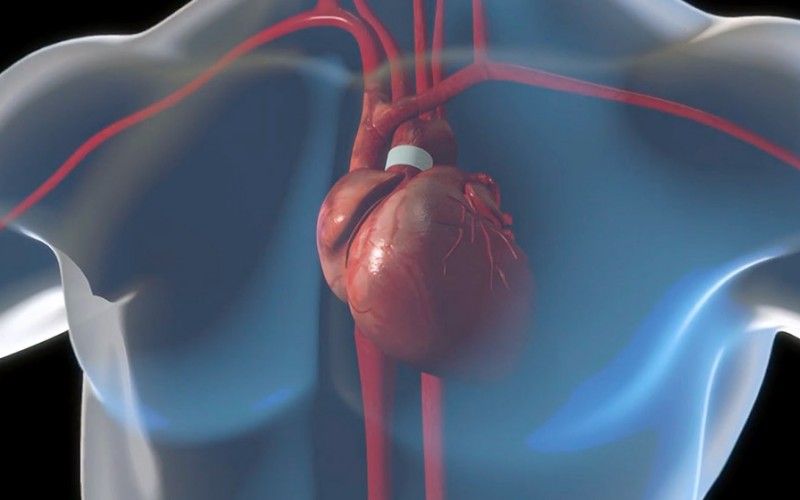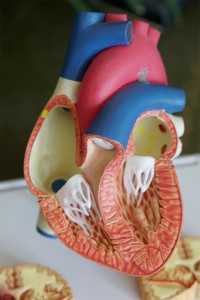If you have any heart condition, including Mitral Valve Prolapse, you may hear the term “ejection fraction” (EF) many times. It describes the ability of your heart in pumping blood for each heartbeat. However, EF is often more specifically described as the amount of blood pumped out from left heart ventricle.
EF is strongly connected to the left part of the heart because of its importance. The left valve pumps oxygen-rich blood from the left chamber to the left ventricle, before being distributed to other organs through the arteries. Understanding the ejection fraction is important to detect abnormalities in the heart, including condition such as Mitral Valve Prolapsee.
Ejection Fraction Measurements
Percentage measures ejection fraction and the numbers are related to how much blood pumped per heartbeat. The doctor measures your EF using several methods, such as an echocardiogram, MRI, and nuclear stress test. The results are important to determine whether your heart and its mechanism work properly or not.
Here are the measurement standards doctors use to read the EF:
EF 55 to 70 percent
These numbers mean your heart’s blood pumping ability is normal. It means there are 55 to 70 percents of blood being pumped in the left ventricle. Depending on the numbers, medical history, and symptoms you may have, these numbers may also mean that you have a heart condition with preserved EF.
EF 40 to 54 percent
These numbers indicate slightly below-normal blood pumping action. This means that there is less oxygen being pumped from the ventricles, which can potentially deprave other organs to get the benefits. However, you may not experience symptoms at this stage.
EF 35 to 39 percent
These numbers indicate the blood-pumping action that is moderately below normal. You may experience slight symptoms (unnoticeable in some people), and there is a chance of mild heart failure.
EF less than 35 percent
This is the lowest bar for the standard of blood-pumping ability. You are at high risks of experiencing cardiac desynchronization, cardiac arrest, and heart failure.
Doctors will relate these numbers to other aspects of your lifestyle and medical conditions or history. It is important to make notes and educate yourself about your current condition to keep up with the discussion.
How EF Relates to Mitral Valve Prolapse
Mitral Valve Prolapse is a condition where the valve of the heart’s left ventricle collapses, making the heart unable to pump oxygen-rich blood properly. This condition affects two to three percent of populations, and often without noticeable symptoms. However, in more severe cases, MVP can increase risks of heart failure or stroke.
MVP has common symptoms similar to heart attack or even anxiety attack, such as cold sweat, heart palpitations, dizziness, swollen feet and hands, and a heavy feeling in the chest. Even without heart failure or stroke risks, these symptoms can affect your daily life. MVP can be detected through the numbers of your ejection fraction.
If the heart’s valve does not work properly, the blood pumping action and heart rate are disturbed. Therefore, the numbers of ejection fraction can be used to determine whether you have MVP or not.
Other Causes of Abnormal Ejection Fraction

Broken heart illustration / everydayhealth.com
Abnormal ejection fraction does not always mean you have Mitral Valve Prolapse. Other conditions can cause your heart to have low EF measurements, such as:
Systolic heart failure
If MVP is caused by abnormal heart’s valve, systolic heart failure is caused by the inability of the left ventricle itself to pump enough blood.
Cardiomyopathy
Cardiomyopathy is a condition where your heart’s wall slowly weakens, preventing the heart to do normal blood-pumping action.
Coronary artery disease
Coronary artery disease is caused by cholesterol buildup that blocks the arteries, reducing or even blocking the blood’s normal path in the arteries. It can lead to heart attack if left untreated.
Hypertrophic cardiomyopathy
Hypertrophic cardiomyopathy is a condition where the heart wall tissue thickens, reducing the organ’s ability to pump blood properly. This disease is genetic and often does not show noticeable symptoms for a long time.
The doctor determines the cause of abnormal EF by checking your symptoms, test results, medication and medical histories, and other health-related factors. From here, proper treatment or procedure can be suggested.
Possible Treatments for Abnormal Ejection Fraction

If abnormal ejection fraction affects your life significantly, your doctor may prescribe medications such as beta-blockers, ACE inhibitors, or angiotensin II receptor blockers. ALWAYS consult your cardiologist before taking any medicine! If your heart muscle stiffens, you may also get spironolactone or eplerenone. If there is a fluid that disturbs your breathing, you can also get diuretics.
If MVP causes your abnormal ejection fraction, your doctor will further determine the severity of the condition. If your MVP does not cause serious symptoms, you may only get medications and need to do a regular check-up. However, if the damage on the valve is serious, you may need to go through surgery.
Understanding the relation between ejection fraction and heart condition is important to know the best treatment. Make sure to check your EF regularly, especially if you have a bad lifestyle or have heart disease history in the family.




Leave a Reply